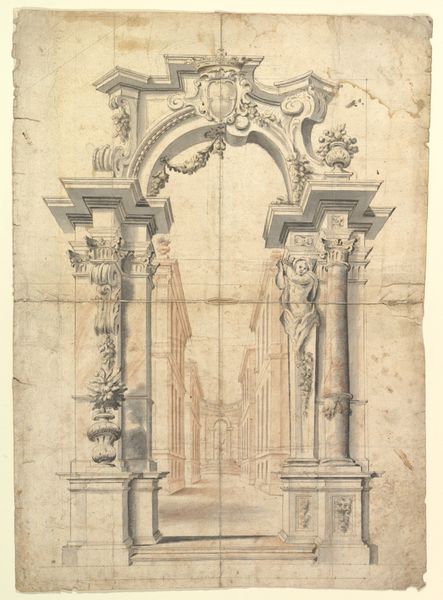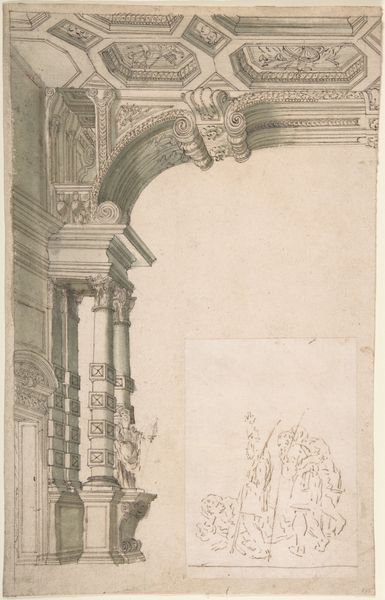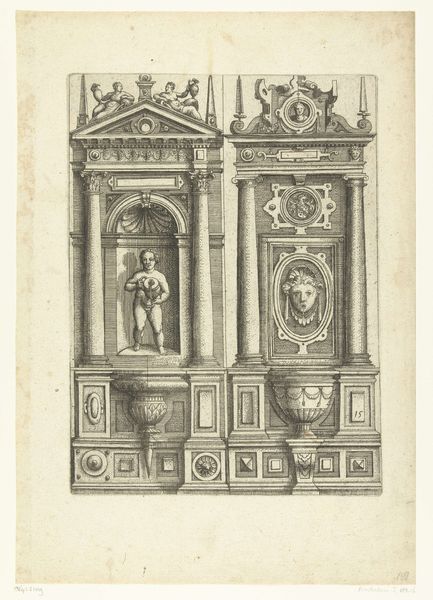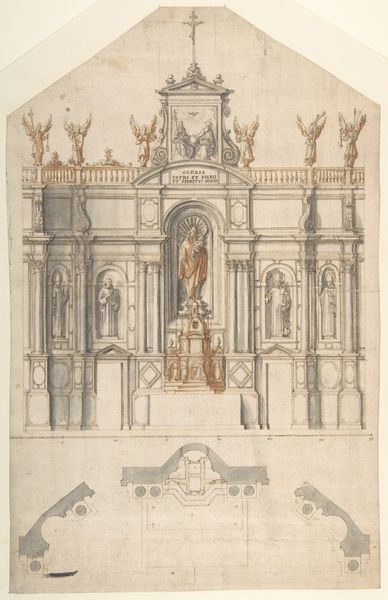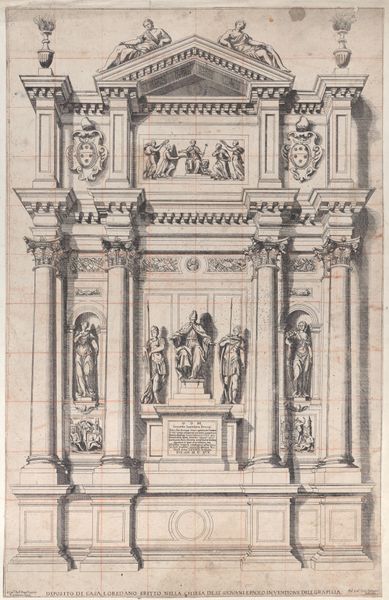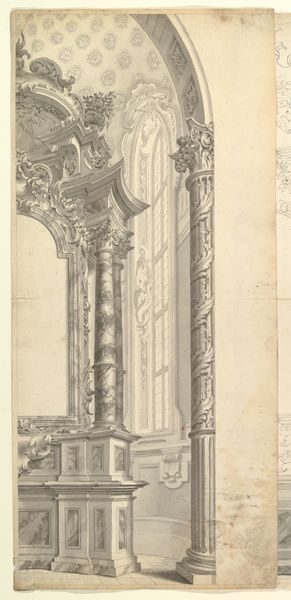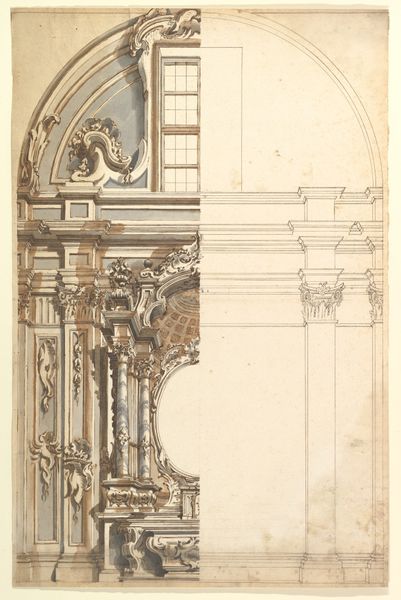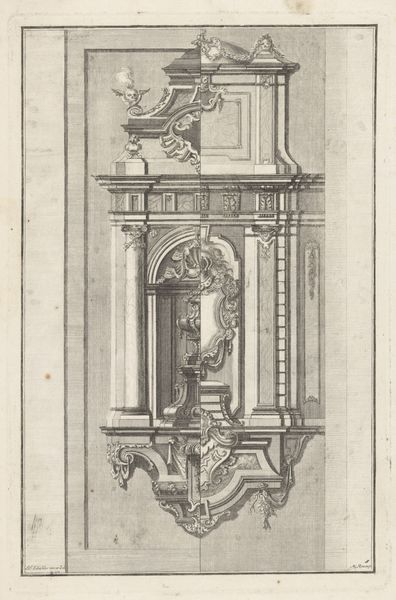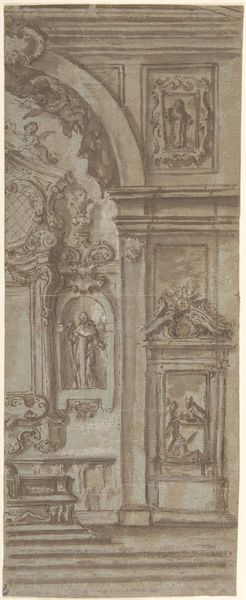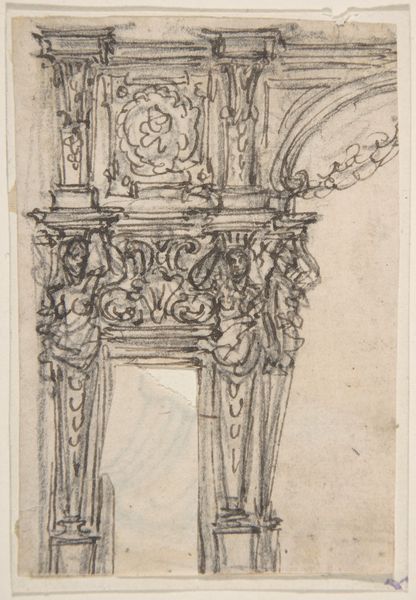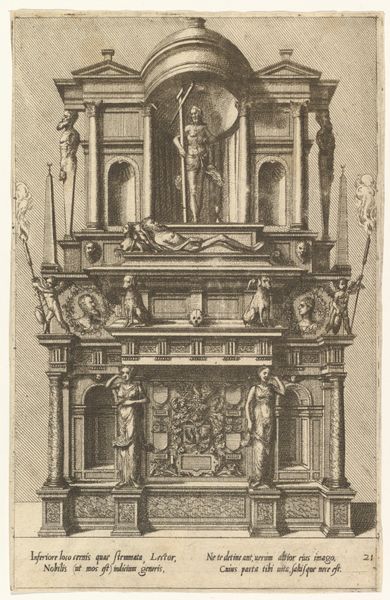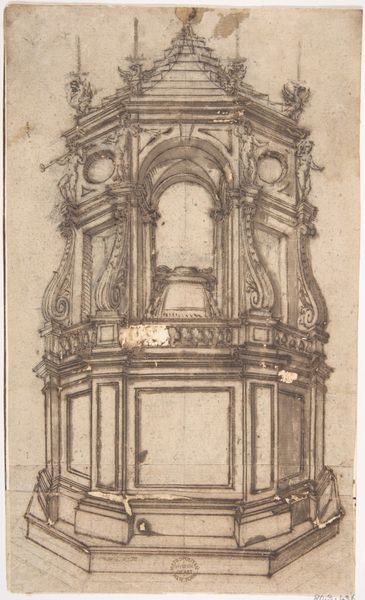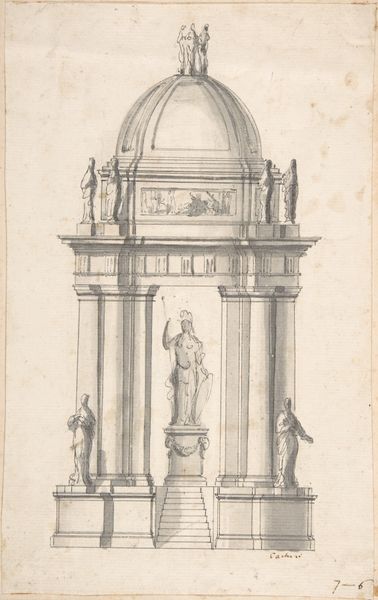
drawing, print, ink, architecture
#
architectural sketch
#
drawing
#
baroque
# print
#
etching
#
form
#
ink
#
line
#
academic-art
#
architecture
Dimensions: 5 9/16 x 2 3/8in. (14.1 x 6cm)
Copyright: Public Domain
Curator: This ink and etching print, titled "Design for the Left Half of an Altar," comes to us from the Italian artist Mauro Antonio Tesi, dating from about 1730 to 1766. What's your initial read of this Baroque sketch? Editor: Imposing, but also incomplete. It's like a fragment of a dream, grand in scale yet somehow haunted by what’s missing. The figures, though small, seem burdened. Curator: The Baroque loved drama. Think about the Catholic Church during this time—reasserting its power. Altars were center stage, theatrical settings for the Eucharist. Notice the symbolism, the figures within niches acting almost as relics themselves. It reminds us of the gendered symbolism within the catholic church during the 18th century in Italy. Editor: Indeed. These altars weren't just places of worship; they were powerful statements of religious authority. And I’m struck by the careful attention to the classical forms—the columns, the statues—but used in such an exuberant, almost excessive way. The circular relief—a "tondo"—echoes back to Greco-Roman motifs, what can we learn from this connection? Curator: The Church appropriating those forms, as so often happened. The very act of enshrining these images creates hierarchies. We can almost read the print as a kind of resistance to austere dogma; as the beginning of secular forms that are still in their infant stage in the collective European imaginary. Editor: I agree, the sacred and the profane are interwoven so intriguingly. This etching carries so much memory in each of its careful marks—the layered historical and spiritual weight of architectural ambition and theological power. What stands out to you the most? Curator: For me, it’s how the grand designs can be so intimately rendered. Tesi makes evident a historical moment. A study like this pulls back the curtain, it is quite powerful to witness it like this. Editor: It is rather special. You know, looking at this, I find myself wondering, who knelt before this altar? Whose prayers echoed within those sketched walls? It's the human stories intertwined with the visual language of power that really stay with me. Curator: Precisely, and for me, I can understand more clearly how the architectural design is the materialization of an ideology. I never thought I would say that so concisely, after seeing this print. Thank you.
Comments
No comments
Be the first to comment and join the conversation on the ultimate creative platform.
